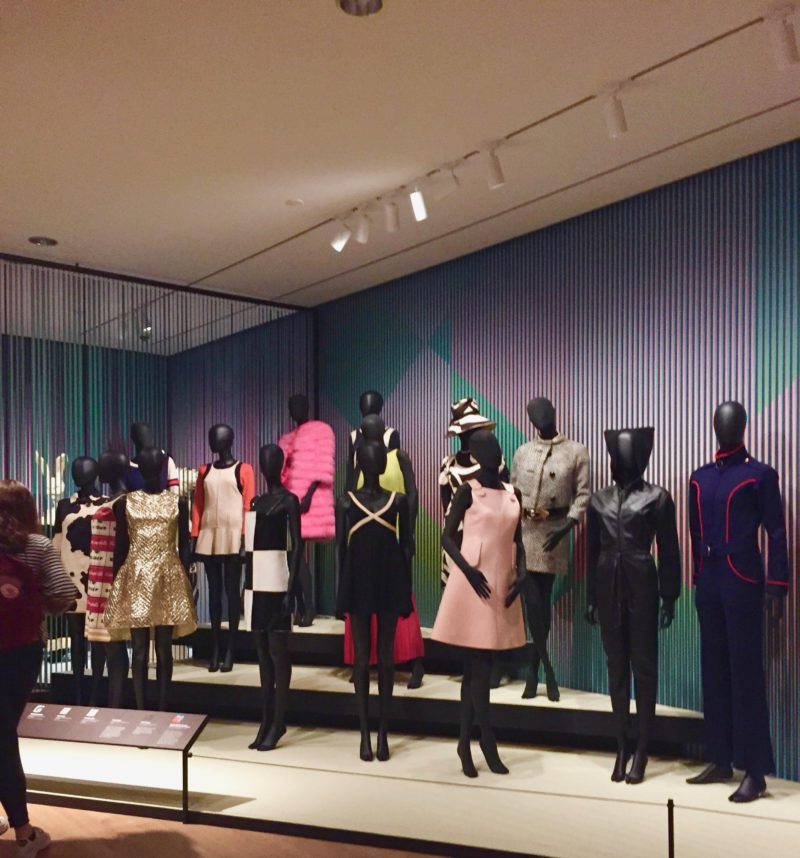Time seems to be flying by since the MA Documenting Fashion course took our study trip to New York. I remember the trip with fond memories because even after growing up in upstate New York (about 90 minutes from Manhattan) and after living in the city for my undergraduate studies, I felt like I was seeing New York in a new way. While there were many highlights of the trip from visiting various archives and meeting with previous graduates of the MA Documenting Fashion course, the “main event” (in my opinion) was the Mod New York: Fashion Takes a Trip exhibition at the Museum of the City of New York. It pains me to say that it was my first time visiting the museum, but after going to the exhibition curated by Phyllis Magidson, I know it will surely not be my last.

I was so impressed with the exhibition for primarily three reasons. Firstly, it was a comprehensive survey of the different emerging fashion styles in the 1960’s in New York. The physical space of the exhibition was rather small (only occupied a room and small hallway) and used multicolored paneling to divide the room into different spaces, which also provided a rather psychedelic optical illusion effect through changing of color depending on the visitor’s spatial position. The exhibition situated New York fashion in the 1960’s as a reflection of the socio-political climate. The diversity in fashion styles reflect a fluidity of beliefs, and the idea of clothing signifying perhaps an individual’s political beliefs vis-a-vis a collective style of dress. Secondly, I admired the exhibition’s aim to be inclusive of a diverse range of styles of marginalized groups of people. It was not simply a showcasing of upper-class white style and dress, but one that acknowledges that 1960’s fashion is not exclusively emerging from the pages of European high fashion magazines and couturiers, but it’s also coming from the street. Fashion undergoes a synthesis, and in a way, it was more inclusive than it ever was before in the 1960s. Lastly, I was impressed by the exhibition’s attention to detail—not only in terms of the types of objects it displayed such as: accessories, undergarments and women’s fashion magazine and news articles of the time, but also attention to visitor experience. The exhibition was not only a visual exploration into New York style in the 1960’s, but a sonic one as well. In reality the exhibition would take about 20 minutes to walk through, however, with the decision to add a curated playlist to the exhibition experience featuring the musical stylings of Dusty Springfield, Marvin Gaye to Crosby, Stills, Nash & Young, you cannot help but want to peruse the exhibition again just to hear what might play next.


While I was completely breath-taken by the garments on display from Emilio Pucci to Bonnie Cashin (all of which come from the Museum’s collection!), I was charmed by the other senior visitors of the exhibition. As I was writing notes, I couldn’t help but overhear the endearing conversations of older couples enjoying the garments in display, not just for aesthetic reasons, but enjoying the garments as symbol of their own personal memory. I overheard one woman saying to her friend, “It doesn’t seem so long ago, (I guess) it’s all perspective.” After I heard that, I stopped looking at the exhibition through a purely academic lens, but a personal one. I began to imagine my older family members who experienced and lived through this time in New York, and I was reminded by my aunts and mother talking about the craze of hot pants and afro-puffs and how good they used to look “back in the day” while living in the South Bronx. Fashion, in the exhibition, takes a trip through 1960’s through themes of nostalgia, politics, popular culture, while ultimately landing on the theme of collective resilience in the face of adversity, an idea that continues to carry salience today.
By Destinee Forbes







